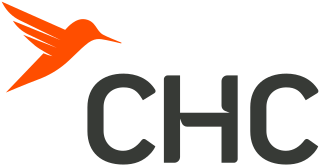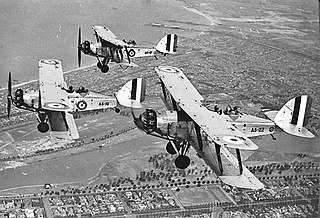
CHC Helicopter is a Texas-based helicopter services company.

Johann Friedrich Hohenberger OAM, also known as John Friedrich, was executive director of the National Safety Council of Australia during the 1980s. He was the subject of Victoria's biggest fraud case and known as "Australia's greatest conman".
A registered training organisation (RTO), in Australia, is an organisation providing Vocational Education and Training (VET) courses to students, resulting in qualifications or statements of attainment that are recognised and accepted by industry and other educational institutions throughout Australia.

RAAF Base Pearce is the main Royal Australian Air Force (RAAF) military air base in Western Australia, located in Bullsbrook, north of Perth. It is used for training by the RAAF and the Republic of Singapore Air Force.

Australian Maritime Safety Authority (AMSA) is an Australian statutory authority responsible for the regulation and safety oversight of Australia's shipping fleet and management of Australia's international maritime obligations. The authority has jurisdiction over Australia's exclusive economic zone which covers an area of 11,000,000 square kilometres (4,200,000 sq mi). AMSA maintains Australia's shipping registries: the general and the international shipping registers.
Australian ufology refers to a historical series of Australian events and or activities pertaining to government departments, civilian groups or individual Australians, which centre on or around the study of Unidentified Flying Object (UFO) reports, sightings, encounters and other related phenomena, known as ufology within the Australian context before 1984.
Air traffic control in Australia is provided by two independent organisations, one civilian and one military. The civilian provider is Airservices Australia, which controls civilian airfields and airspace. The military provider is the Royal Australian Air Force (RAAF), which controls military airfields and adjoining airspace. This includes Australian Army and Royal Australian Navy aviation bases.

RAAF Williams is a Royal Australian Air Force (RAAF) military air base set across two locations, at Point Cook and Laverton, located approximately 20 km (12 mi) south-west of the Melbourne central business district in Victoria, Australia. Both establishments previously existed as separate RAAF Bases until 1989 when they were amalgamated to form RAAF Williams. The name was chosen in honour of Air Marshal Sir Richard Williams, the 'father' of the RAAF.

No. 2 Flying Training School is the main flying training school of the Royal Australian Air Force (RAAF). Formed under its present name in 1969, it is located at RAAF Base Pearce, Western Australia. The unit operates a fleet of Pilatus PC-21 turboprop trainers. No. 2 FTS traces its origins to the post-war re-establishment of the Air Force's original cadet training unit, No. 1 Flying Training School, at RAAF Point Cook, Victoria, in 1947. Following reorganisation of aircrew training in 1951–52, No. 1 FTS was renamed No. 1 Applied Flying Training School, and began specialising in advanced flight instruction on CAC Wirraways. It relocated to RAAF Base Pearce in 1958, where it converted to De Havilland Vampire jet trainers. In January 1969, the school was reformed as No. 2 FTS, having the previous year begun replacing the Vampires with Macchi MB-326Hs. The Macchis were themselves replaced by the PC-9 beginning in 1989.

The Westpac Lifesaver Rescue Helicopter Service is a helicopter surf lifesaving service that operates in Australia.
Dame Beryl Edith Beaurepaire, was an Australian political activist, feminist and philanthropist.

Seaplane Squadron was a flying unit of the Royal Australian Air Force (RAAF) between the wars. It operated Supermarine Southampton flying boats from January 1928, as well as other types. Along with Fighter Squadron, Seaplane Squadron was a component of No. 1 Flying Training School, based at RAAF Point Cook, Victoria. Seaplane Squadron was responsible for coastal reconnaissance, training aircrew to operate seaplanes, and supporting the Royal Australian Navy. It also conducted survey flights over remote parts of Australia and mapped the Darwin–Sydney section of the Empire Air Mail Scheme route. Seaplane Squadron was disbanded in June 1939.

The Volunteer Air Observers Corps (VAOC) was an Australian air defence organisation of World War Two. The VAOC was formed in December 1941 to support the Royal Australian Air Force (RAAF) with its main roles of sighting and observing aircraft over Australia. The VAOC swiftly established thousands of Observation Posts (OP) across the country and provided information to the RAAF's regional air control posts.

Ambulance Victoria (AV), a Victorian agency of the Department of Health and Human Services, is the statutory provider of pre-hospital emergency care and ambulance services in Victoria. Ambulance Victoria was formed on 1 July 2008 with the merger of the Metropolitan Ambulance Service (MAS), Rural Ambulance Victoria (RAV), and the Alexandra District Ambulance Service (ADAS). Ambulance Victoria has undergone significant reform since 2008.

Australia was the first country to make wearing bicycle helmets mandatory. The majority of early statistical data regarding the effectiveness of bicycle helmets originated from Australia. Their efficacy is still a matter of debate.

No. 4 Service Flying Training School was a flying training school of the Royal Australian Air Force (RAAF) during World War II. It was formed in February 1941, and commenced flying the following month. Responsible for intermediate and advanced instruction of pilots under the Empire Air Training Scheme (EATS), the school was based at Geraldton, Western Australia, and operated Avro Anson aircraft. Two reserve squadrons were formed in response to the outbreak of war in the Pacific, though they never saw action. Flying activity was reduced towards the end of 1943, and the school was disbanded in May 1945, having graduated over 1,000 pilots. It re-formed as No. 87 Operational Base Unit, which was renamed Care and Maintenance Unit (CMU) Geraldton in May 1946. CMU Geraldton was disbanded in September 1947.

No. 1 Aircraft Depot (No. 1 AD) was a maintenance unit of the Royal Australian Air Force (RAAF). Formed in July 1921 at RAAF Point Cook, Victoria, it relocated to the nearby RAAF Laverton in March 1926. As well as servicing aircraft and other equipment, in its early years the depot supported survey flights in Australia and the Pacific region. It was also responsible for training maintenance staff.

Air Vice Marshal William Lloyd Hely, CB, CBE, AFC was a senior commander in the Royal Australian Air Force (RAAF). He graduated from the Royal Military College, Duntroon, in 1930 before transferring to the RAAF as a cadet pilot. Hely came to public attention in 1936–37, first when he crashed on a survey flight in the Northern Territory, and later when he undertook two successful missions to locate missing aircraft in the same vicinity. His rescue efforts earned him the Air Force Cross. After occupying staff positions during the early years of World War II, Hely was appointed Officer Commanding No. 72 Wing in Dutch New Guinea in May 1944. Later that year he formed No. 84 Wing, commanding it during the Bougainville campaign until the end of the Pacific War.
Ian Francis McLaren, M.A., Dip. Com., D. Litt.,, F.R.H.S.V., was an Australian politician, accountant, businessman, historian, bibliographer and book-collector.

The development of aerial firefighting and forestry in southern Australia ran in parallel with the rapid improvements in aircraft technology over the last century. As more advanced and capable aircraft became available firefighters and foresters quickly sought opportunities to utilise and adapt them.
















